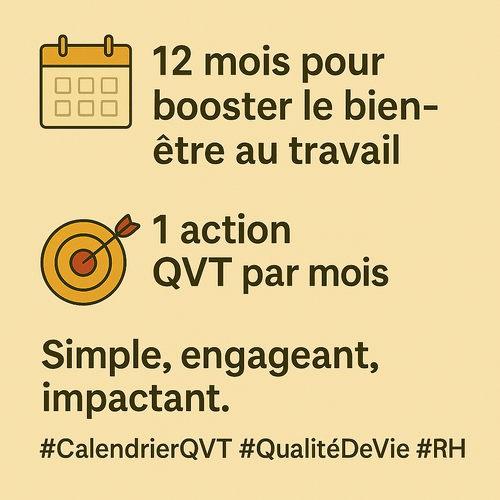Introduction
Employee well-being is a major issue for businesses today. However, workplace distress is not always evident .
It often starts with weak signals , discreet clues which, if not detected in time, can lead to massive disengagement, increased absenteeism and even burnouts .
So, how can we identify these signs before they become problematic? What behaviors should alert managers and HR directors?
In this article, we will explore the main weak signals of workplace unhappiness and suggest solutions to address them.
1. A gradual decline in engagement and motivation 📉
One of the first signs of workplace unhappiness is a loss of engagement . An employee who was once motivated and engaged suddenly becomes more passive, less willing, and less creative.
Signs to watch for:
✅ Less initiative or involvement in projects
✅ Less participation in meetings
✅ A more detached attitude towards the company and its objectives
✅ An increase in errors and a lack of concentration
Solution: Organize regular interviews , encourage feedback and implement tools to measure engagement (e.g. anonymous surveys).
2. An increase in absences and sick leave 🤒
Repeated absences or frequent sick leave may reflect deep-seated unhappiness.
Signs to watch for:
✅ An increasing absenteeism rate within a department
✅ Frequent sick leave, particularly due to stress or exhaustion
✅ An employee who often arrives late or leaves work early
Solution: Analyze absenteeism trends to identify anomalies and propose solutions such as occasional teleworking or prevention actions (coaching, sophrology, wellness program).
3. More difficult communication or progressive isolation 🤐
When an employee is not feeling well, they tend to withdraw into themselves . They communicate less with their colleagues and participate little in group interactions.
Signs to watch for:
✅ Fewer informal exchanges (coffee breaks, team meals)
✅ An employee who avoids interactions and prefers to isolate himself
✅ A reduction in exchanges by email or Slack
✅ A marked change in attitude: distant, less smiling, colder
Solution: Encourage supportive management and informal opportunities for discussion. Implement a mentoring system among employees to encourage team cohesion.
4. Relationship tensions and a bad work atmosphere ⚡
A deteriorating work climate is often a symptom of increased stress or a lack of recognition.
Signs to watch for:
✅ More frequent conflicts between colleagues
✅ Negative thoughts or open criticism about the company
✅ A rise in cynicism or sarcasm
✅ An imbalance in the distribution of tasks (overinvestment by some, disengagement by others)
Solution: Set up spaces for discussion to discuss frustrations and propose solutions (discussion groups, coaching, mediation).
5. Chronic fatigue and decreased performance ⚠️
An employee who is suffering is often mentally and physically exhausted . They may have difficulty maintaining their usual level of performance.
Signs to watch for:
✅ A decrease in productivity and quality of work
✅ A permanently tired employee who lacks dynamism
✅ Difficulty concentrating on simple tasks
✅ Increased irritability or excessive sensitivity to criticism
Solution: Encourage a better work-life balance with appropriate policies: flexible hours, right to disconnect, mandatory breaks.
6. Visible physical changes 😟
Discomfort at work is not only manifested by behavior, but also by physical signs .
Signs to watch for:
✅ Sudden weight loss or gain
✅ Appearance of frequent migraines, muscle pain, digestive disorders
✅ A paler complexion, dark circles, a more closed posture
Solution: Raise awareness among managers about psychosocial risks and encourage healthy lifestyle habits at work (balanced diet, physical activity, stress management).
7. A constant need for recognition or hypersensitivity 🥺
Some employees, under stress or exhaustion, may constantly seek approval or be very affected by criticism .
Signs to watch for:
✅ Excessive anxiety about doing something wrong
✅ Hypersensitivity to comments
✅ A constant search for validation
Solution: Work on a culture of recognition with regular feedback, encouragement and celebration of individual and collective successes.
Conclusion: Detect early to better prevent 🚨
Identifying weak signals of workplace discomfort is essential to avoid situations of chronic stress, absenteeism or disengagement .
Companies that anticipate these signals and implement preventive actions improve employee satisfaction, reduce turnover and boost their productivity.
And you, have you implemented tools to measure the well-being of your employees?
Discover how Neary can support you with tailor-made solutions!










